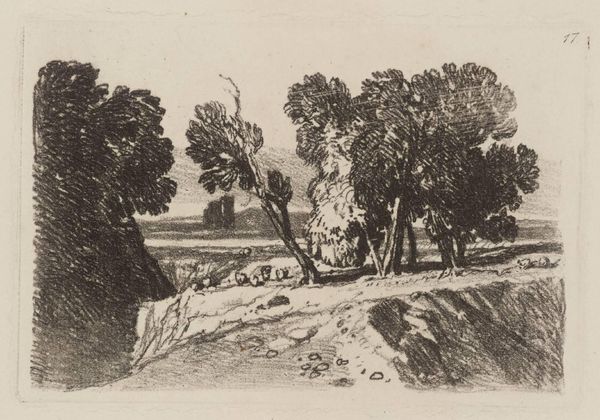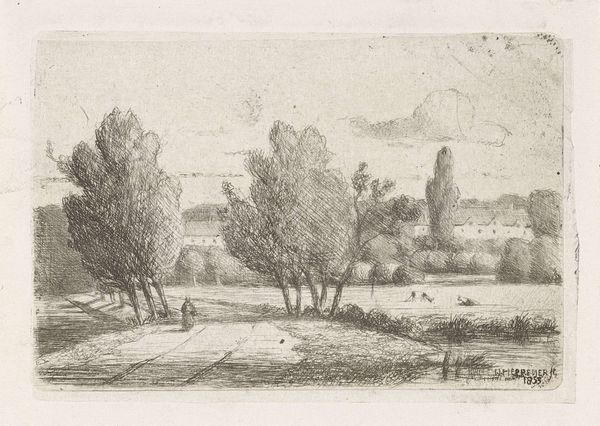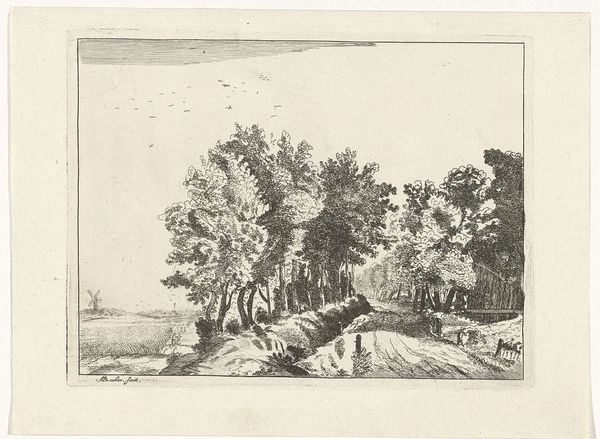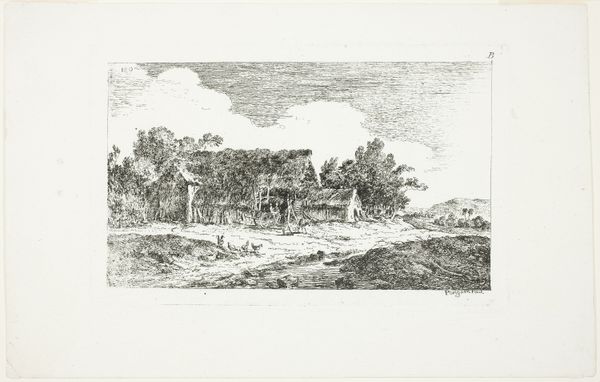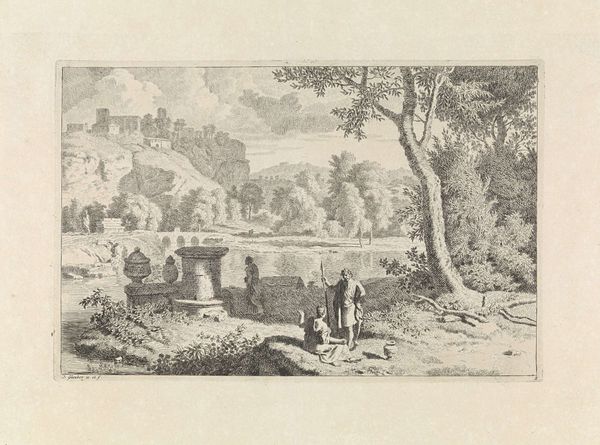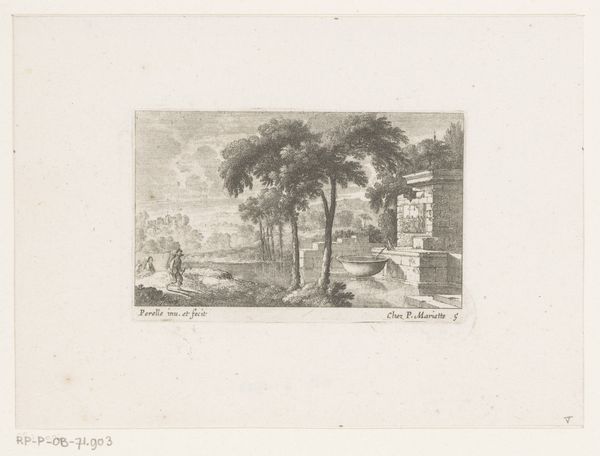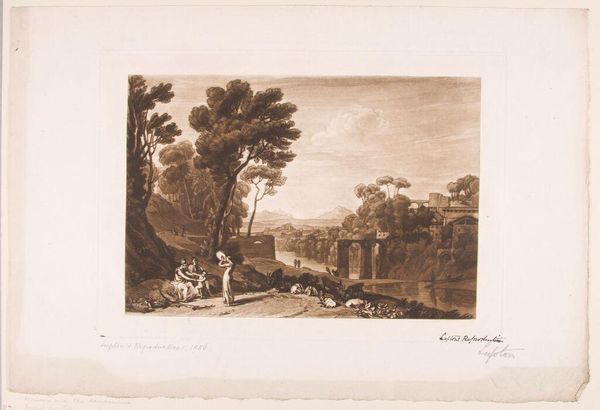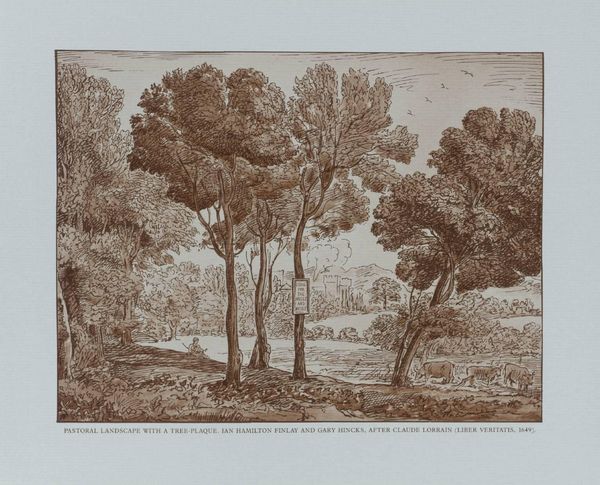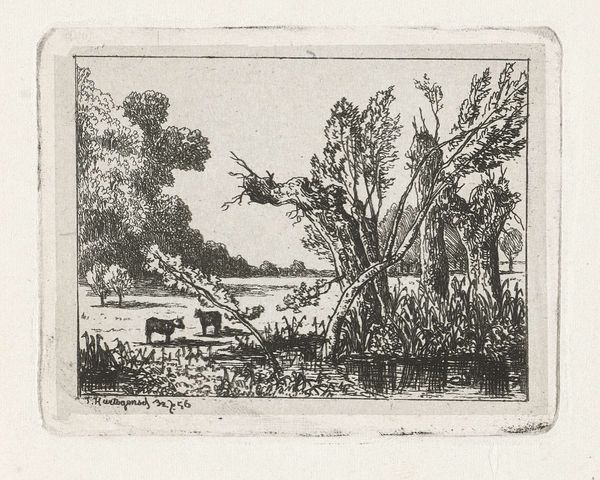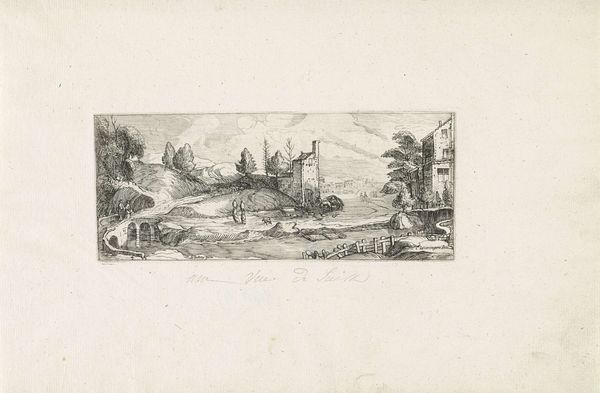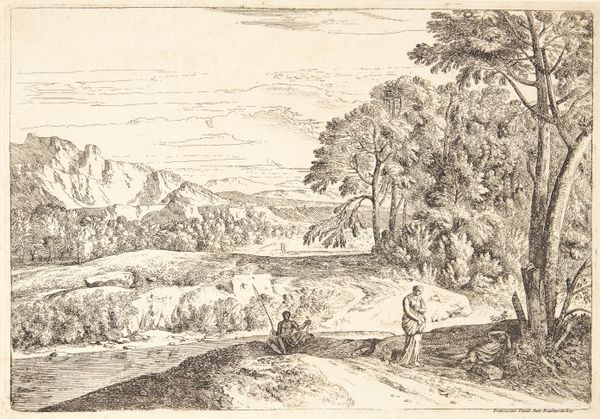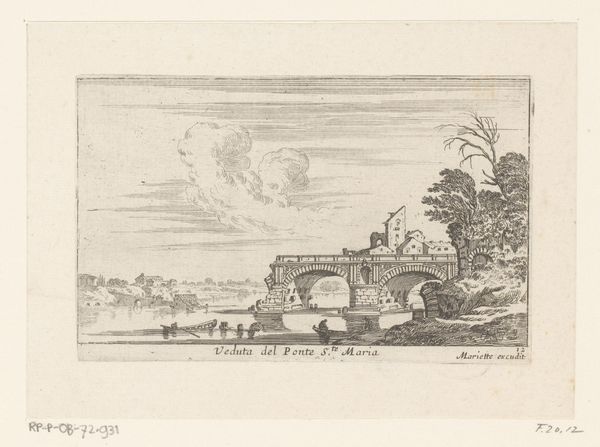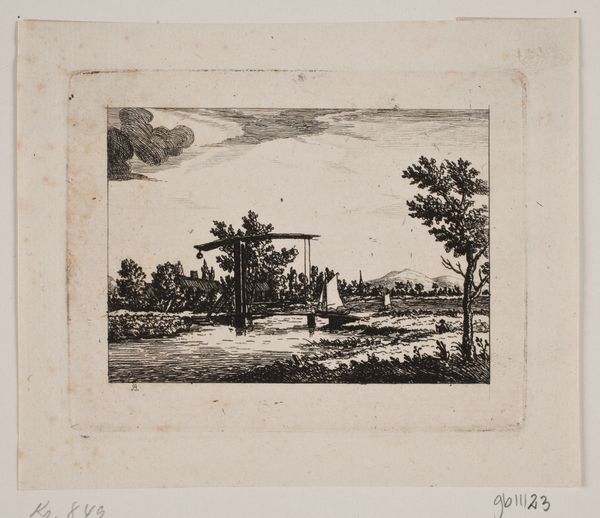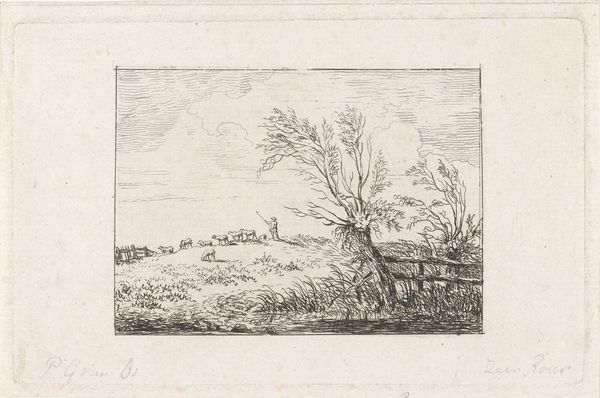
drawing, print, etching
#
drawing
# print
#
etching
#
landscape
#
romanticism
Dimensions: height 185 mm, width 282 mm
Copyright: Rijks Museum: Open Domain
Curator: Immediately, I am struck by the pervasive grayness. It feels melancholic, perhaps, even though the scene itself depicts what seems like a very idyllic setting. Editor: Indeed. What we’re looking at is an etching by Pierre Louis Dubourcq, created around 1845. The work, titled “Italiaanse Villa,” resides here at the Rijksmuseum. The romantic landscape showcases Dubourcq’s mastery of the etching technique to produce something quite affecting. Curator: Etching, with its reliance on acid to bite into the metal plate, offers a distinct texture, doesn’t it? You can see how that textural quality emphasizes the materiality of the stone walls and foliage; that rough materiality lends an almost palpable reality to this villa. How do you think the architecture and landscaping, those signs of power and wealth, engage with the somewhat humble figure walking away in the bottom right? Editor: That’s a powerful question. I think about how travel in this period, the Grand Tour specifically, was itself a demonstration of privilege. Romantic artists frequently staged these scenes, in which a solitary figure—often with their back turned, inviting the viewer into their personal experience—is set against an historic monument or an untouched natural scene. Dubourcq invites his Dutch audience into the aspirational dream of Italy, to consider their place in the larger European theatre. The gray palette may simply speak to the printmaking materials available at the time. Curator: Interesting point! Though even this grayness, as you suggest, points toward the ready availability and broad dissemination that etchings offered as a form of social capital in the marketplace. The question then becomes: whom did this gray Romanticism serve, and what kind of narratives did it allow? Editor: A thought-provoking inquiry, highlighting how art intersects with social history and consumerism. It underscores the need for understanding artistic materials to further decode the narratives embedded within the artwork. Thank you for sharing this reflection. Curator: Likewise. It all contributes to understanding how our public collections, such as the Rijksmuseum, themselves become part of that unfolding story.
Comments
No comments
Be the first to comment and join the conversation on the ultimate creative platform.
